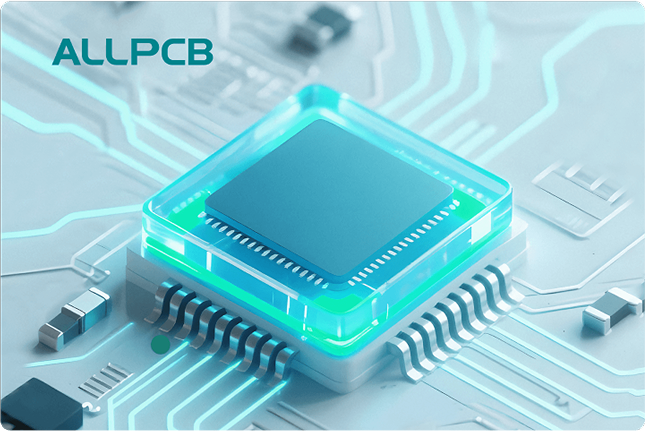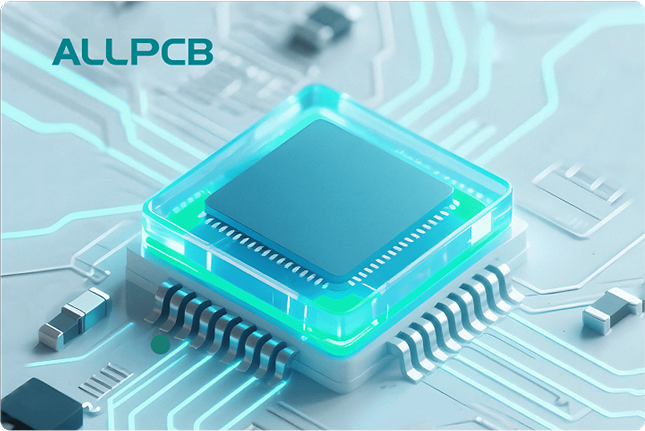Choosing the right sensor for your IoT PCB design is critical to ensuring your device performs efficiently, consumes minimal power, and meets the demands of your application. Whether you're working on a smart home device, industrial monitoring system, or wearable technology, sensor selection can make or break your project. In this comprehensive guide, we'll walk you through the essential steps and considerations for IoT sensor selection, focusing on PCB design for IoT, sensor specifications, low power sensors, and wireless sensor PCB integration. Let's dive into the details to help you make informed decisions for your next IoT project.
Why Sensor Selection Matters in IoT PCB Design
Sensors are the heart of any Internet of Things (IoT) device, acting as the interface between the physical world and digital systems. They collect data such as temperature, humidity, motion, or light, which is then processed and transmitted for analysis or action. However, not all sensors are created equal. Selecting the wrong sensor can lead to inaccurate data, high power consumption, or even compatibility issues with your PCB layout. For IoT PCB design, the right sensor ensures seamless integration, optimal performance, and long-term reliability.
In this guide, we'll cover everything from understanding sensor types to evaluating specifications and integrating them into your PCB layout. Our goal is to equip you with the knowledge to choose sensors that align with your project's needs, especially for low power and wireless applications.
Understanding the Role of Sensors in IoT Applications
Before diving into the selection process, it's important to understand the role sensors play in IoT systems. Sensors are responsible for data acquisition, which is the first step in the IoT workflow. This data is then processed by a microcontroller or microprocessor and transmitted via wired or wireless connections to a central system or cloud platform.
For example, in a smart thermostat, a temperature sensor measures the room's ambient temperature. This data is used to adjust heating or cooling systems automatically. Similarly, in industrial IoT, vibration sensors on machinery can detect anomalies, preventing costly downtime by alerting maintenance teams early.
The diversity of IoT applications means there are countless sensor types, each suited for specific tasks. Your choice of sensor will depend on the environment, power constraints, and data requirements of your project.
Key Factors in IoT Sensor Selection for PCB Design
When selecting a sensor for your IoT PCB design, several factors must be considered to ensure compatibility and performance. Let's break down the most important aspects to focus on during the selection process.
1. Sensor Type and Application Requirements
The first step in IoT sensor selection is identifying the type of data your device needs to collect. Common sensor types for IoT applications include:
- Temperature Sensors: Used in smart thermostats, weather stations, and industrial monitoring. They typically operate within a range of -40°C to 125°C with an accuracy of ±0.5°C.
- Humidity Sensors: Essential for environmental monitoring and agriculture IoT devices, often paired with temperature sensors.
- Motion Sensors: Used in security systems and wearables, detecting movement via infrared or ultrasonic technology.
- Light Sensors: Found in smart lighting systems, measuring ambient light levels to adjust brightness.
- Pressure Sensors: Common in medical devices and industrial automation for monitoring air or fluid pressure.
Match the sensor type to your application's specific needs. For instance, if you're designing a wearable fitness tracker, a motion sensor combined with a heart rate sensor would be ideal.
2. Sensor Specifications and Performance Metrics
Once you've identified the sensor type, dive into the sensor specifications. These technical details determine how well the sensor will perform in your IoT device. Key metrics to evaluate include:
- Accuracy: How close the sensor's readings are to the true value. For example, a temperature sensor with ±0.1°C accuracy is better for precise applications than one with ±1°C.
- Range: The minimum and maximum values the sensor can measure. A pressure sensor with a range of 0 to 100 kPa may not suit high-pressure industrial environments.
- Resolution: The smallest change the sensor can detect. Higher resolution is critical for applications requiring fine measurements.
- Response Time: How quickly the sensor reacts to changes. For real-time monitoring, a response time of under 1 second is often necessary.
Always refer to the sensor's datasheet for these specifications and ensure they align with your project's goals.
3. Power Consumption for Low Power Sensors
Power efficiency is a top priority in IoT devices, especially for battery-operated systems like wireless sensors. Low power sensors are designed to minimize energy use, extending the device's battery life. When evaluating power consumption, consider:
- Operating Voltage: Many IoT sensors operate at 3.3V or lower to save power. Ensure compatibility with your PCB's power supply.
- Current Draw: Look for sensors with low active current (e.g., under 1 mA) and ultra-low sleep mode current (e.g., under 1 μA).
- Duty Cycling: Some sensors support duty cycling, where they only activate periodically to take measurements, further reducing power use.
For example, in a remote environmental monitoring system, a low power temperature sensor that draws only 0.5 mA during operation can significantly extend battery life over months or even years.
4. Size and Form Factor for PCB Integration
IoT devices are often compact, requiring sensors that fit within tight PCB layouts. Surface-mount devices (SMD) are popular for their small size and ease of integration into PCB designs. Check the sensor's package dimensions (e.g., 2 mm x 2 mm for a tiny humidity sensor) and ensure it fits your board's layout without causing interference with other components.
Additionally, consider the placement of the sensor on the PCB. For instance, temperature sensors should be placed away from heat-generating components like power regulators to avoid skewed readings.
5. Communication Interface for Wireless Sensor PCB
Most IoT sensors communicate with the microcontroller via standard interfaces like I2C, SPI, or UART. For wireless sensor PCB designs, ensure the sensor's interface matches your system's communication protocol. I2C is often preferred for its simplicity and low pin count, operating at speeds up to 400 kHz for fast data transfer.
For wireless IoT applications, sensors may need to integrate with modules supporting protocols like Wi-Fi, Bluetooth Low Energy (BLE), or LoRa. BLE, for instance, is ideal for low power wireless sensors, offering a range of up to 100 meters while consuming minimal energy.
Challenges in Integrating Sensors into IoT PCB Design
Integrating sensors into a PCB for IoT devices comes with its own set of challenges. Addressing these issues early in the design phase can save time and resources.
Signal Integrity and Noise
Sensors often produce analog signals that are susceptible to noise from nearby components or external interference. To maintain signal integrity:
- Use proper grounding techniques, such as a dedicated ground plane on your PCB.
- Place decoupling capacitors (e.g., 0.1 μF) close to the sensor's power pins to filter out noise.
- Keep sensor traces short and away from high-frequency digital signals to minimize crosstalk.
Thermal Management
IoT devices with multiple components can generate heat, affecting sensor accuracy. For example, a temperature sensor near a power-hungry processor may report higher readings than the actual ambient temperature. To mitigate this, use thermal vias or heat sinks in your PCB design to dissipate heat effectively.
Power Supply Stability
Fluctuations in power supply can lead to erratic sensor behavior. Ensure a stable voltage supply by using low-dropout (LDO) regulators or DC-DC converters in your PCB design. A typical LDO can maintain a steady 3.3V output with an input range of 3.5V to 5V, ideal for low power sensors.
Best Practices for Sensor Selection in Wireless Sensor PCB Design
Wireless IoT devices have unique requirements due to their reliance on battery power and remote operation. Here are some best practices for selecting sensors for wireless sensor PCB designs:
- Prioritize Low Power Modes: Choose sensors with configurable sleep or standby modes to conserve energy when not in use.
- Optimize Data Transmission: Select sensors that output data efficiently, reducing the need for frequent wireless transmissions that drain power.
- Ensure Compatibility with Wireless Protocols: Verify that the sensor's data rate and interface work seamlessly with your chosen wireless module, whether it's BLE, Zigbee, or LoRa.
For instance, in a wireless soil moisture monitoring system for agriculture, a low power sensor combined with a LoRa module can transmit data over long distances (up to 10 km in open areas) while maintaining battery life for months.
Testing and Validation of Sensors in IoT PCB Design
After selecting and integrating sensors into your PCB, thorough testing is essential to validate performance. Follow these steps:
- Functional Testing: Verify that the sensor outputs data within the expected range and accuracy under normal operating conditions.
- Environmental Testing: Expose the device to varying temperatures, humidity, or other conditions to ensure sensor reliability.
- Power Consumption Testing: Measure the current draw in active and sleep modes to confirm it matches the datasheet values.
Using a multimeter or oscilloscope, you can measure voltage levels and signal timing to ensure the sensor operates as expected. For example, an I2C sensor should show clean clock and data signals at 100 kHz or 400 kHz on the oscilloscope.
Future Trends in IoT Sensor Technology
The field of IoT sensors is evolving rapidly, with advancements that promise to enhance PCB design for IoT. Some emerging trends include:
- Miniaturization: Sensors are becoming smaller, with packages under 1 mm x 1 mm, allowing for even more compact IoT devices.
- Energy Harvesting: Future sensors may power themselves using ambient energy from light, heat, or vibration, eliminating the need for batteries.
- AI Integration: Sensors with built-in processing capabilities can perform edge computing, reducing data transmission and power use.
Staying updated on these trends can give your IoT projects a competitive edge, ensuring they are future-proof and efficient.
Conclusion: Making the Right Choice for Your IoT PCB Design
Selecting the right sensor for your IoT PCB design is a multi-faceted process that requires careful consideration of application needs, sensor specifications, power constraints, and PCB integration challenges. By focusing on factors like accuracy, power consumption, and communication interfaces, you can ensure your IoT device performs reliably and efficiently. Whether you're designing for low power sensors or wireless sensor PCB layouts, the principles outlined in this guide will help you navigate the complexities of IoT sensor selection.
At ALLPCB, we understand the importance of precision in every stage of IoT development. With the right sensor and a well-designed PCB, your IoT project can achieve optimal performance and scalability. Use this guide as your roadmap to build innovative, efficient, and reliable IoT solutions that stand out in today's connected world.
 ALLPCB
ALLPCB







